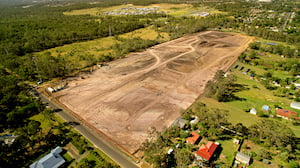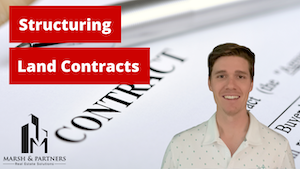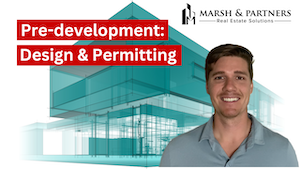Commercial Development Costs and How to Create a Real Estate Development Budget
Real estate development budgets often end up as living, breathing documents. Therefore, preliminary budgets should be built early, refined as a project progresses, and constantly reviewed against actual costs as an accountability benchmark.
But the process for building a real estate development budget is not always intuitive, and if you’re unfamiliar with the development and construction processes, it can be impossible.
In this article, we’ll offer a high-level overview of the significant cost categories by phase of development, discuss the importance of a well-defined scope to the budget creation process, and wrap up with a discussion of common mistakes creating a construction budget.
A breakdown of real estate development costs by phase
The first step in building a development budget is to understand the inputs and construction costs by each project phase.
Generally, the real estate development process follows 4 key phases:
- Site selection & land acquisition
- Pre-development
- Development & construction
- Post-construction/closeout or operation & management
Cost breakdowns will fluctuate contingent on the type of real estate being developed. For example, medical office and retail products may call for more expensive finishes and buildout, while industrial or multi-family may benefit from fewer amenities or economies of scale.
Each of these phases of development includes major activities that incur expenses. Examples of costs by stage can consist of:
Site selection & land acquisition
- Attorney and legal fees
- Feasibility study costs
- Land option fee
- Consulting fees
Pre-development
- Site evaluation & due diligence costs (i.e., boundary/topo surveys, geotechnical survey/soil study, traffic impact studies, environmental assessments, etc.)
- Architect & design costs
- Civil engineering & site plan costs
- Land-use attorney & legal fees
- Land entitlement requirements (rezoning fees, subdivision fees, etc.)
- Review & permitting fees
- Brokerage fees
Development & construction
- Sitework & earthwork costs (construction staking, erosion control, land clearing & grading, stormwater collection, etc.)
- Utility work & connection fees
- Foundation, parking, and landscaping costs
- Construction costs
- Interior buildout costs
- Construction management fees
Post-construction/closeout or operation & management
- Inspection fees
- Leasing & brokerage fees
- Management & operating expenses (maintenance, CAPEX, taxes, insurance, etc.)
It’s important to note that development projects will also incur finance and bank costs and carrying costs. Financing costs may include lender-related fees and interest on the note. At the same time, other carrying costs will consist of insurance, taxes, and additional fees associated with land ownership.
Hard vs. soft costs incurred during real estate development
Instead of breaking down costs by phase, some real estate developers prefer to lump costs into one of two categories: hard costs and soft costs. We’ll look at the difference between hard and soft costs and discuss their impact on a construction budget.
What are construction hard costs?
Construction hard costs are generally related to the physical construction of a building. They are more tangible than soft costs and will often account for a majority of your development budget. Hard costs can include:
- Construction materials and labor
- Parking and paving
- Sitework
- Utilities
- Landscaping
Because hard costs are more closely tied to tangible products, they vary directly with fluctuating material and labor costs. As the prices of construction inputs change, so too will hard costs. So when estimating hard costs for a preliminary budget, it's essential to use quality historical information in addition to current bids.
Market volatility, supply chain constraints, and price fluctuations can significantly impact your ability to estimate hard costs accurately.
What are construction soft costs?
Construction soft costs are expenses that are not directly tied to the construction of a building. They are not as tangible and can be less evident than hard costs. Soft costs can include:
- Engineering and architecture costs
- Review and permit fees
- Maintenance and insurance costs
- Inspection fees
- Legal and accounting fees
Unlike hard costs, soft costs can continue even after the completion of a project. The ongoing maintenance, operation, and security of a property require continuing expenses.
Keep in mind that soft costs can directly impact a project's hard costs. For instance, an elaborately designed building may require more expensive materials and higher quality labor. Therefore, improperly managed soft costs can result in significant real estate budget estimation challenges.
The importance of monitoring scope
A scope document is the first step in clearly defining action steps and outcomes when undertaking a real estate development project. A well-defined scope establishes control factors and is vital for a couple of reasons:
Avoiding change orders
A change order is a term that refers to any variation or amendment to an original construction contract or scope of work.
Change orders can be the death of a construction project. They’ll add time and costs to the development, often create friction between parties, and may even lead to additional legal fees to arbitrate disputes.
A detailed scope will help minimize these disruptions. Not only does it help keep contractors on task, but it also discourages overzealous owners from seeking last-minute design changes that could delay or derail a project.
Keeping costs down
Controlling costs during real estate development is no easy task. However, it's so crucial to the success of a project that the industry created a standalone professional service, construction management, to help solve this need.
Poor site management, human error, and the inefficient sourcing of construction materials are some of the biggest culprits that lead to cost overruns. But even missteps during the design phase can lead to significant problems – overly designed architectural features or a flawed engineering plan can bust your real estate development budget.
A clearly defined end state and enumerated roles and responsibilities for each party help delineate tasks better and promote greater fiscal stewardship.
Keeping contingency buffers to a minimum
Cost contingency buffers are a great tool to allocate capital for unforeseen problems when building a real estate development budget. But lazy and flawed estimation practices have the industry accustomed to using contingency buffers as a crutch for poor forecasting.
These management reserves also pose a problem for transparency and consistency among budget forecasts within the real estate development industry, even as a line item on a proforma.
Indeed, development experience helps establish confidence intervals for project outcomes and, ultimately, necessary contingency buffers. Recent development projects can also be used as benchmarks to estimate current market and labor conditions – which can help inform critical levels of contingency buffers.
But a solid project scope will clearly define any necessary tasks – and holds the developer, principal/owner, and contractor accountable for accurate and minimal contingency reserves.
How to estimate development costs
Real estate development cost estimation is as much of an art as it is a science.
Nevertheless, developers and contractors often tout their ability to forecast costs more accurately than their competitors, which adds significant value for a real estate development project. But estimating development costs is more than plugging numbers into a spreadsheet and crossing your fingers.
Building a preliminary forecast begins with solid plans from both a land and building standpoint.
Once you’ve selected a site, you can more accurately estimate necessary site work and engineering costs, as well as other land development considerations like stormwater collection and utilities.
But site work is just one aspect of the development process. Estimating soft costs will largely depend on accurate 3rd party quotes and recent historical data.
Thorough building plans, or at the very least, a solid vision of the future structure and design features, is essential to estimate hard costs accurately. And you’ll need to rely on educated conjecture, 3rd party quotes, historical data, and materials future prices to help solidify those numbers.
Major contractors use several cost estimation techniques to develop budgets. Strategies like the unit pricing method and the square foot/budget method have proven effective.
As a real estate developer or owner, you should understand they exist and work with several contractors to determine the most favorable and accurate forecast.
Common mistakes when projecting your real estate development budget
Variance between forecasted and actual real estate development costs is unavoidable during a project. Prices vary by region, labor and materials costs continuously fluctuate, and major macroeconomic disruptions may be impossible to predict.
There are, however, common avoidable mistakes that result in poor real estate cost breakdowns and failed projects, including:
- Cost underestimating
- Failure to account for supply chain disruptions
- Failure to account for inflation
- Lack of a scope document and poor planning
- Overly optimistic schedule or timeline
- Incomplete or subpar due diligence
- Failure to account for futures prices
- Leaving no room/budget for inevitable setbacks
Cross-referencing your development budget against other current available estimates and with other industry professionals is an essential step to ensuring its accuracy.
Let Marsh & Partners be your real estate development guide
Are you planning a real estate development for your business? In the middle of a project but facing major challenges and dealing with constant setbacks? Or maybe you’re an investor just assessing the feasibility of a proposed project.
Marsh & Partners' real estate consulting services can help.
Preliminary development budget construction and financial analyses - feasibility studies - pre-development and development services - post-construction operation and management. We have experience in all phases of the real estate development process.
Determining the total costs of a commercial real estate development project is challenging, but critical in determining whether to move forward with a project.
Perfectly profitable deals have been scrapped because of inaccurate budget estimates. Just as otherwise unfeasible projects have been greenlit based on flawed information.
As an owner’s representative or development consultant, Marsh & Partners can help you navigate the challenging real estate development process – if you have questions, we’d love to chat.



